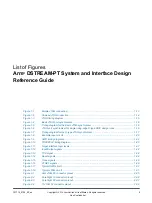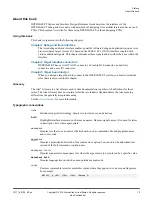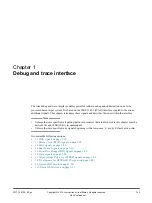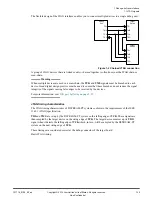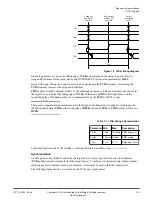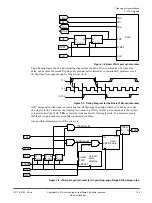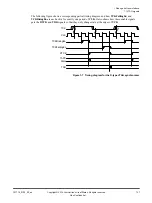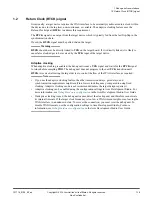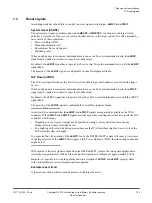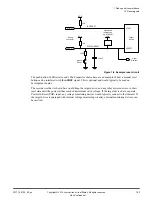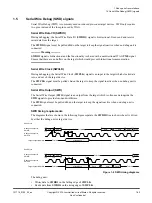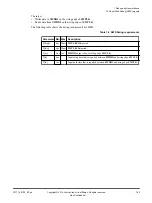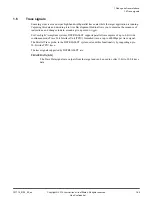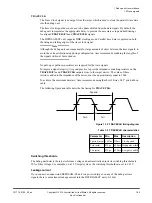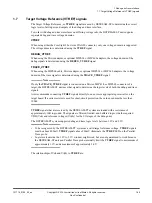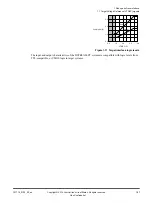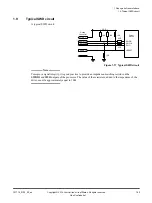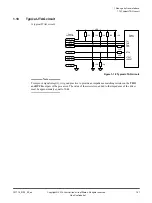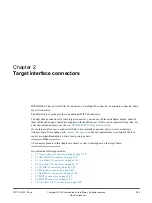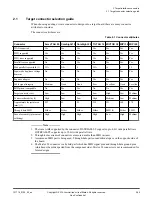
1.3
Reset signals
Arm debug units have the ability to control two reset signals on the target:
nSRST
and
nTRST
.
System Reset (nSRST)
The system reset signal, sometimes known as
nRESET
or
HRESET
, is an input to the target which
performs a warm boot of the core (or cores) and other devices in the target system. It is often asserted by
one or more of these conditions:
• Power On Reset (POR)
• Manual push-button reset
• Remote reset from a debug unit
• Watchdog reset
When no debug unit is connected, unintended resets can occur. To avoid unintended resets, the
nSRST
signal must be pulled to its inactive logic level on the target.
By default, the
nSRST
signal has a logic level of active
LOW
. To avoid unintended resets, pull the
nSRST
signal
HIGH
.
The polarity of the
nSRST
signal is configurable in Arm Development Studio.
TAP Reset (nTRST)
The TAP reset signal initializes the Test Access Port, debug logic, and boundary scan cells in the target
device.
When no debug unit is connected, unintended resets can occur. To avoid unintended resets, the
nTRST
signal must be pulled to its inactive logic level on the target.
By default, the nTRST signal has a logic level of active
LOW
. To avoid unintended resets, pull the nTRST
signal
HIGH
.
The polarity of the
nTRST
signal is configurable in Arm Development Studio.
Note
Arm strongly recommends that the
nSRST
and
nTRST
signals are separately available on the JTAG
connector. If the
nSRST
and
nTRST
signals are linked together, resetting the system also resets the TAP
controller, which means:
• Depending on your target, it might not be possible to debug a system from reset because any
breakpoints previously set might be lost.
• You might need to restart the debug session because the JTAG interface might not recover when the
TAP controller state is changed.
It is expected that the assertion of the
nSRST
line by the DSTREAM-PT system will cause a warm reset
of the target system. If the
nSRST
line triggers a full, Power On Reset (POR), then the debug connection
might be lost.
With regards to the reset signals output from the DSTREAM-PT system, the strong pull-up/pull-down
resistance is approximately 33Ω, and the weak pull-up/pull-down resistance is approximately 4.7kΩ.
Because it is possible to switch the polarity and drive strength of
nTRST
and
nSRST
, target systems
with various different reset configurations are supported.
Example reset circuit
A typical reset circuit which would be present on the target board, is:
1 Debug and trace interface
1.3 Reset signals
101714_0100_02_en
Copyright © 2019 Arm Limited or its affiliates. All rights reserved.
1-19
Non-Confidential


